 
Auto Truck Industrial Appliances (ATIA)
New York, New York
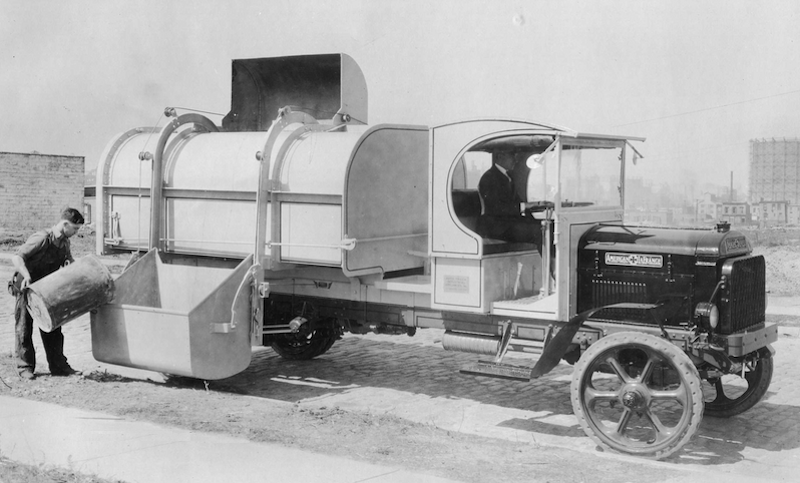
The side-bucket, self-loading truck body was one of the first designs for refuse collection to appear in the United States. Otto Knigge (1919) and George Otterson (1923) filed the earliest patents, but it is unknown if either design was ever produced in any significant numbers. Henry Lima of Stamford, Connecticut filed for another patent in 1925, assigning the rights to Auto Truck and Industrial Appliances Inc. (ATIA), with sales offices in New York City. The following year, one of George Otterson's patents was re-issued and rights assigned to ATIA, and they became the first American company known to have marketed self-loading bodies for the collection of municipal refuse. The ATIA Ash and Garbage Remover was advertised as early as 1926, and the City of Boston was one of the first users, having put an ATIA body in service the previous year. Models A-1 Standard (8-cubic yard capacity) and A-2 Special (14.5 yards) were fully enclosed, tilt-to-dump bodies which were mounted on any suitable truck chassis. The underbody hoist was mechanical on the A-1, and hydraulic on the larger A-2 body. Drive for the bucket lift came from a vertical PTO shaft, which automatically uncoupled when the body was raised to dump.
A side-mounted, 1-cubic yard trough, only 30-inches above street level, was loaded with refuse by crewmen. When filled, it was raised by cables to the top of the body and up-ended, discharging its contents inside. A swinging shutter kept dust and odors inside, and the cycle time was claimed to be about 10-seconds. The cables were driven by the truck engine through a power take-off and a forward-neutral-reverse gearbox. The ATIA was a major technical advance in refuse collection for the 1920s, when hand-loading of trucks was laborious and costly. The high dumping angle of the trough helped ensure uniform loading of the body, while dust and odor control were highly desirable aspects of the design. The ATIA even had advanced features such as a rubber-sealed tailgate to contain liquids, and later models had an automatically opened tailgate, pushed upward by rods when the body was raised.
ATIA found municipal customers in the Northeast, including Boston (MA), Hartford (CT), Mt. Vernon (NY) and Rutherford (NJ). Another New Jersey customer was the city of Camden, which replaced horse-drawn collection wagons with ATIA loaders. The company was also known to have produced a truck-mounted crane, and a self-loading dump truck body with a rear bucket. ATIA not only was the first known American company to mass-market a mechanized refuse body, they are also the first known to have filed a patent infringement lawsuit against a competitor. A near-identical body, the Colecto, entered the market around 1928 and triggered the legal action by ATIA against its inventor, W.S. Howard. ATIA lost their case on a slight technicality. Specifically, the court said Howard had not infringed the ATIA patent due to the differences in how the bucket drive was powered. ATIA used a clutch-coupler, which separated from the driveline as the body was hoisted to dump. Howard's Colecto had and entirely different, permanent connection to the vehicle driveline. However, an appeals court reversed this decision in 1929, finding infringement against the ATIA patent, pending answer by appellee Howard. Presumably, this appeals court judgement stood.
Despite having apparently prevailed in their appeal in the case against Colecto, advertising for ATIA abruptly ceased shortly thereafter. The company disappeared from the market almost overnight. ATIA's legal wrangling with Colecto may have taken a financial toll on the company, and they may have simply licensed their patent rights to Howard and Colecto. Almost all of the municipal customers cited in ATIA advertising of the 1920s, would later appear in Colecto ads of the 1930s, which lends credence to the theory that some sort of settlement had been reached. The only certainty is that the Colecto brand flourished, becoming one of the major players in the early days of the refuse truck body industry, while ATIA faded into history.
Henry Lima, who had designed the ATIA body, patented another self-loading truck in 1931, which was assigned to a company called Sanitary Auto Body Corporation of Brooklyn, New York. It is not known if this design was ever in production. However, a working scale model of Lima's body surfaced on eBay in 2005, which may have been built by the inventor himself to sell the concept. The concentration of the early industry around New York City is probably no accident, being the most populous area of the United States at that time. The ultimate sales target was undoubtedly the New York Department of Sanitation (DSNY), owner of the largest municipal sanitation fleet in the nation.
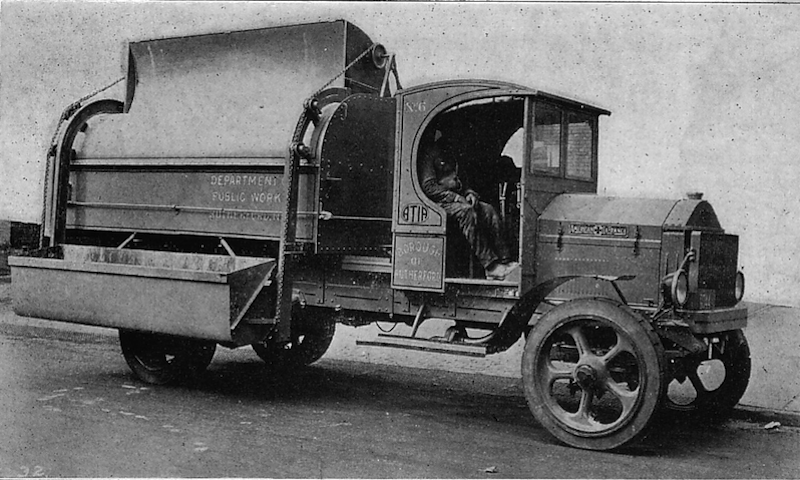
ATIA type A-1 Standard with 8-cubic yard body on an American LaFrance truck chassis
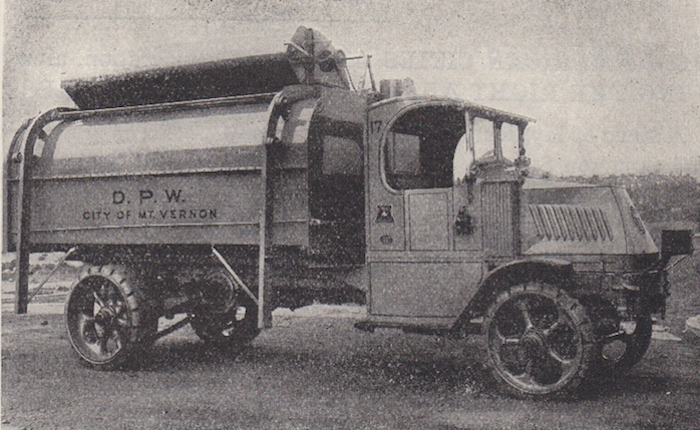
ATIA type A-2 Special with 14.5-cubic yard body on a Mack chassis, showing bucket in raised position
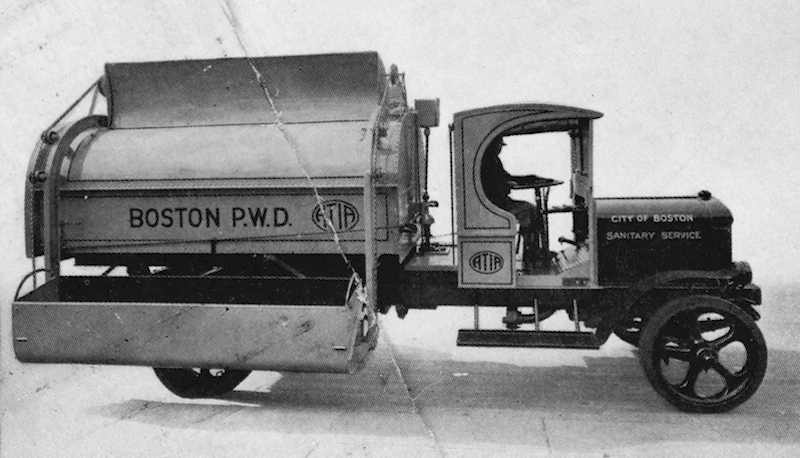
Boston ordered their first ATIA in 1925
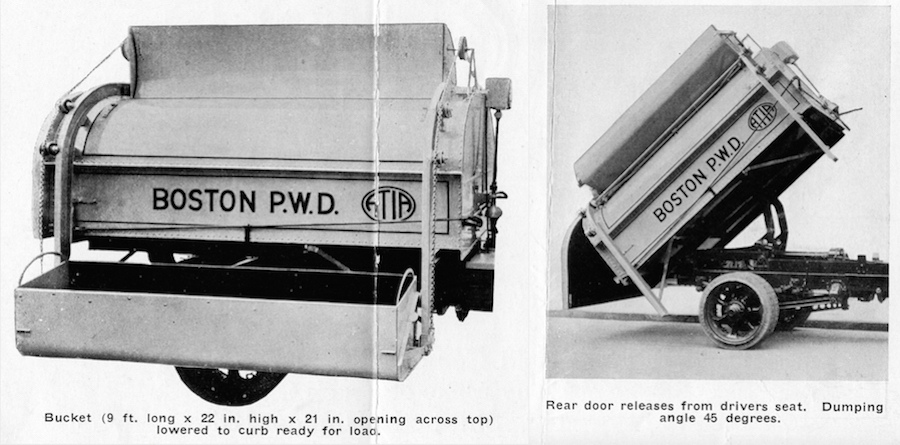
Bucket and dumping details
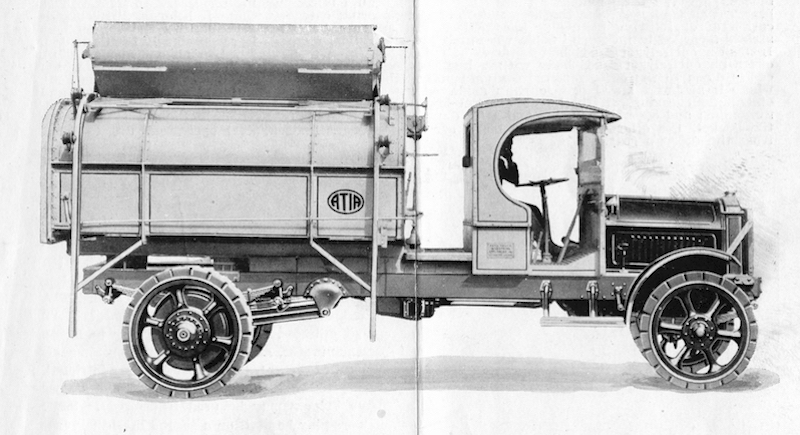
Early-model ATIA with bucket raised
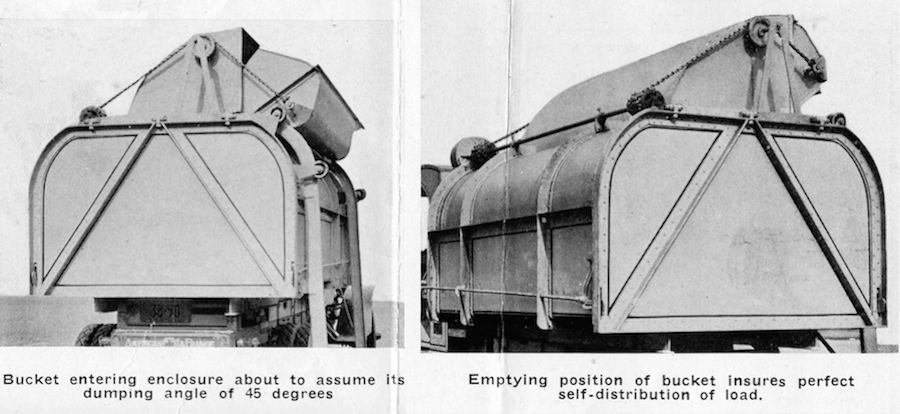
Detail of the bucket operation
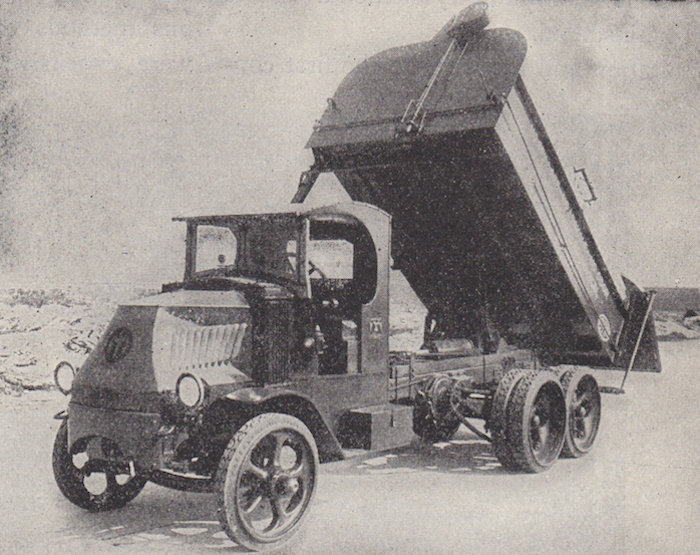
ATIA type A-2 Special with 14.5-cubic yard body and auto-open tailgate on Mack tandem chassis
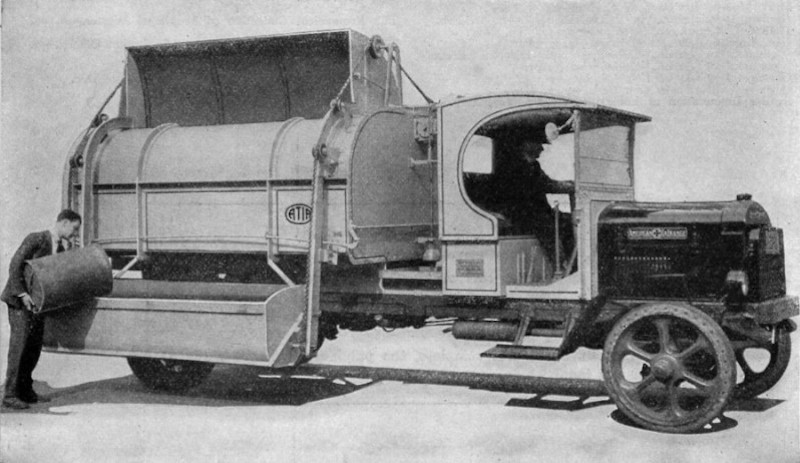
9-cubic yard ATIA from a 1929 advertisement
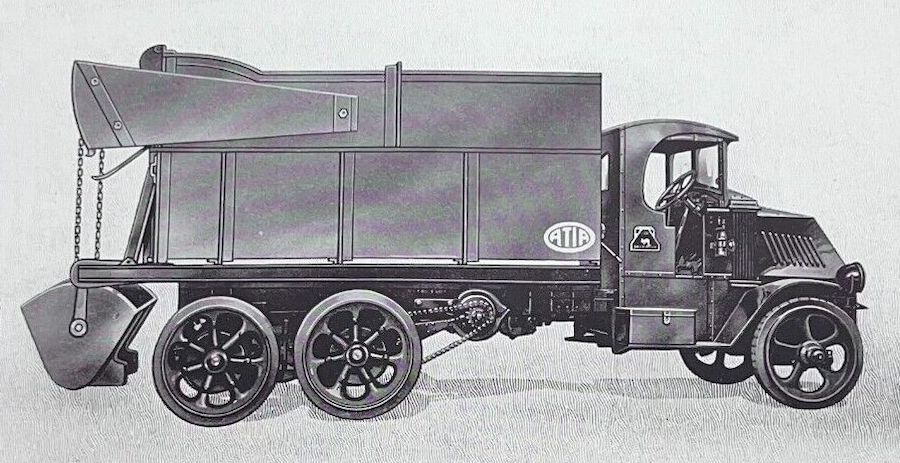
ATIA "new" rear-loading body, circa 1931
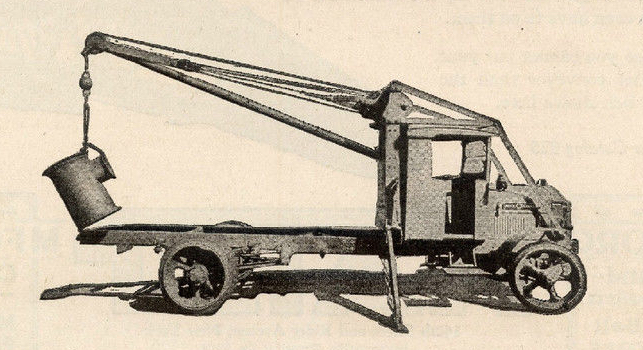
1926 ATIA Auto Truck Derrick
PATENTS:
|
Patent # |
Description |
Inventor |
Assignee |
Date |
|
US1324675 |
Refuse-Collecting Truck (side bucket loader) |
Otto C. Knigge |
|
February 26, 1919 |
|
US1458241 |
Self-Loading Vehicle (side bucket loader) |
George W. Otterson |
|
May 3, 1923 |
|
US1755547 |
Refuse Collector (side bucket loader) |
Henry C. Lima |
ATIA Sales Inc. |
April 11, 1925 |
|
RE16,356 |
Self-Loading Vehicle (re-issue) |
George W. Otterson |
ATIA Inc. |
May 25, 1926 |



7/2/16 (revised 4/14/18)
© 2016
All Rights Reserved
Photos from factory brochures/advertisements except as noted
Logos shown are the trademarks of respective manufacturers
|
| |